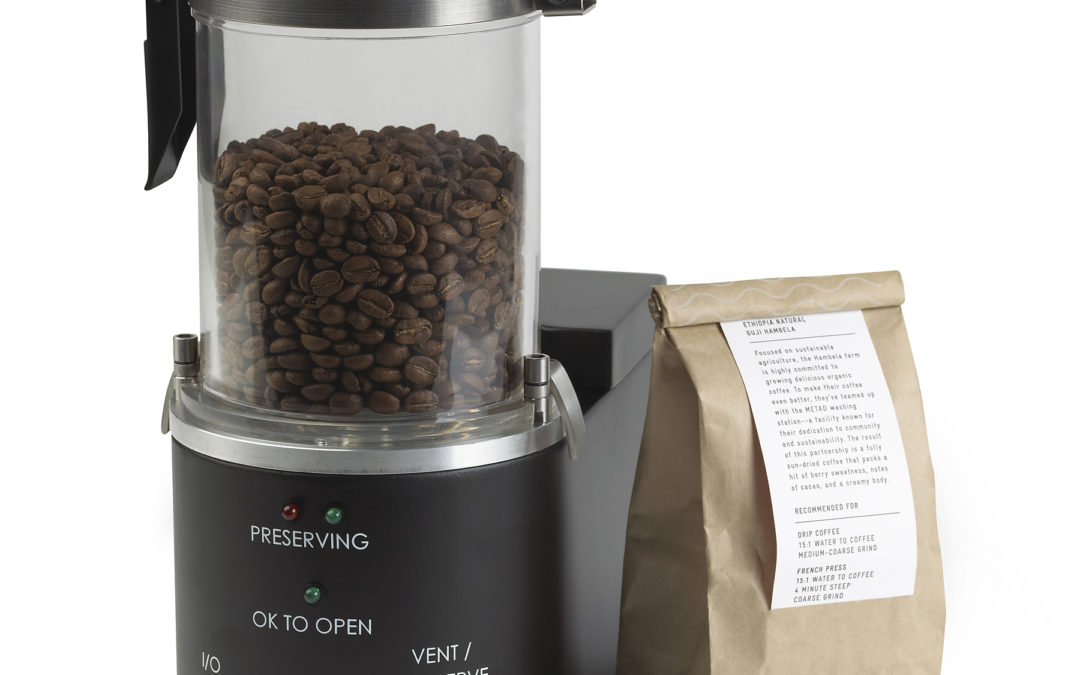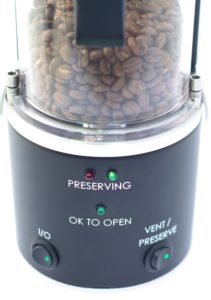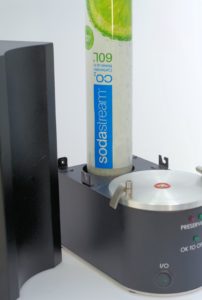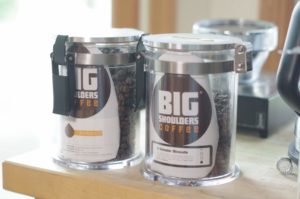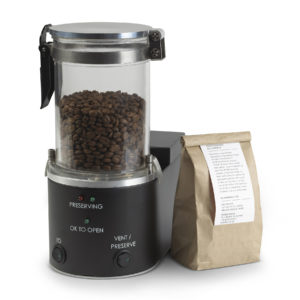 I know many are obsessed with single origin varietals. The industry has done a great job of marketing these. How you brew that coffee is also getting to be widely known as important. Our Four-Way Flight class, originated by Marcus Boni at CoffeeCon is one of our most popular. The idea that coffee might taste different when brewed using a different coffee maker is well demonstrated in this presentation. Sometimes it’s dramatic.
I know many are obsessed with single origin varietals. The industry has done a great job of marketing these. How you brew that coffee is also getting to be widely known as important. Our Four-Way Flight class, originated by Marcus Boni at CoffeeCon is one of our most popular. The idea that coffee might taste different when brewed using a different coffee maker is well demonstrated in this presentation. Sometimes it’s dramatic.
The final frontier of coffee is freshness. It’s the biggest current weakness in coffee compared to say craft beer or wine. Beer is shelf stable for months. Wine is for years, although I know some wines age well, while others don’t. But, over a few months no problem. It’s therefore not unusual, and in fact it’s considered desirable for a wine enthusiast to stock multiple wines for food matching or just plain variety.
How about coffee enthusiasts? Come on. Admit it. You culinary coffee relationships have been condemned to serial monogamy. You buy one, drink it repeatedly in its youth until it’s gone. Then move on to another. While this practice may seem like a good compromise, it limits your enjoyment. For one thing, your wine and beer buddies get to drink whatever kind of beer pleases them.
So, what can we as coffee enthusiasts do? Well, you can freeze coffee. “Oh, no!”, you say. Well some of us do this unashamedly, although much of the industry claims it results in everything from freezer burn to less-than-full flavor. “No one freezes oil” say the geeks. I’m not taking a side on this in this article, but let’s for the moment say that no one claims it’s a first choice, nor as good as fresh-roasted unfrozen coffee.
One-way valve bags were the industry’s great hope of the 90s. This invention, which basically lets gas escape, but no air in, was sold as The Answer. What many of us found, or at least I did, was it was better than nothing. The valve offers protection against outside competing scents. Yes, it allows bean de-gassing in an otherwise sealed bag. But, it slow, rather then prevents staling. Consensus seems to indicate it does a good job of prolonging a bag of beans for a few months, maybe as long as six. Best results are claimed if the beans are scrupulously packed in a nitrogen-flushed environment.
Good so far, right? However, when you purchased that six-month-old sack and break the seal, consensus is they stale quickly, like one-too-many facelifts on a Hollywood star. That fountain-of-youth pill suddenly wears off. I know people, I think sincere ones, in the coffee industry who swear by one-way valve bags, but those are often the same folks who don’t really believe in the whole “fourteen days from the roaster” dogma anyway. I suppose I do, so we gradually drift apart.
The Coffee Freshness System, or CFS for short, is a mechanical storage system consisting of a method of sealing a canister, which you fill with beans. After locking it tight, you simply place it on a mother unit, which draws all the oxygen from it. Meanwhile, Co2 from a replaceable can. This is the ingenious part as it effectively emulates the same effect as nitrogen. When you open the canister, up to a month or more later, to make coffee, the beans are still fresh, presumably as fresh to taste, smell and brew as when you sealed them. I must admit at first I was dubious, but intrigued.
The is of preserving one coffee is enough. But, suddenly it occurs to me that we have a potential revolution on our hands. As individual canisters are sold separately, it is possible to stock several coffees in your home, creating a coffee wine-cellar (coffee cellar?) so to speak. Imagine inviting a friend to drop over and have them pick their coffee the way a wine collector lets you pick a fine wine to open and share.
I knew I had to try this. I begged them to loan me a sample, which was easy.
Why easy?
Apparently the trade doesn’t see the value of this invention. My thought is, “Are they Crazy?” I can’t understand. I asked several of my roaster friends. None of them seemed very excited by it. It took me a while to analyze this but eventually I realized why. People who work at a coffee roasting plant, or even near a small shop roaster are deluged with fresh coffee. They likely aren’t wanting for fresh beans to take home each evening, so they just grab enough to fill tomorrow morning’s brew basket. I’ve even found doing my FB live video conversations with roasters that many do not even brew before coming to work. Why not just wait and sample some when they arrive each morning?
WELL, KEV? HOW WELL DOES IT WORK?
I’m going to tell you after testing for several months I consider the Coffee Freshness System a major breakthrough. I used it one canister several bags of beans, keeping it for a period of weeks each time, which no discernible aroma or scent reduction. It is amazing to have beans for a period past a month or two and break it open and brew it and have it foam up as the water first hits, just as you would with just-roasted coffee.
For a second canister, I grabbed a particularly tasty Kenya Coffee from Big Shoulders in Chicago. These beans were highly rated by the Coffee Review and had a particularly unique flavor footprint. I kept a small amount for nearly four months, then opened the canister and brewed. Again, no difference, at least none I could detect.
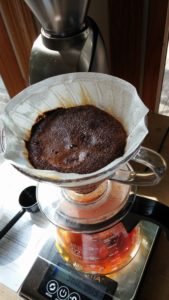
The end result. I took three-month old beans from my Coffee Freshness System canister and brewed a Hario V60 batch. Notice the gentle foam, signaling fresh coffee. Oh yeah. It tasted great!
I consider it a coffee enthusiast game changer. I literally did invite friends over and let them choose their bean, as I’ve let them choose which brewing method in the past. I am now considering amassing more canisters. Warning: You are going to want to do this to maximize the social potential of this invention.
THE COFFEE: HIGH BUT WORTH IT
The Coffee Freshness System is not cheap at $500. It is well-made. I’ve noticed no bugs with it, impressive especially for what must be an early generation product. Some larger companies with more to spend on R&D and tooling have far more tweaks in their early product issues. Robert Wallach, Coffee Freshness System’s primary inventor and founder, is to be congratulated on his invention. Wallach is a coffee enthusiast who likely created this product for his own use, hence his passion and resolve to make it right the first time. Frankly, coming from a video and audio hobbyist background, this price tag is high but not outrageous. I live in a world where hobbyists spend that much on turntables and styluses for their high-end turntables. Wine connoisseurs pay this much for a single bottle of an historic vintage. My older brother paid this much for his first CD player.
It’s an invention that finally makes it possible to collect coffees. Think about that!
Podcast: Play in new window | Download

